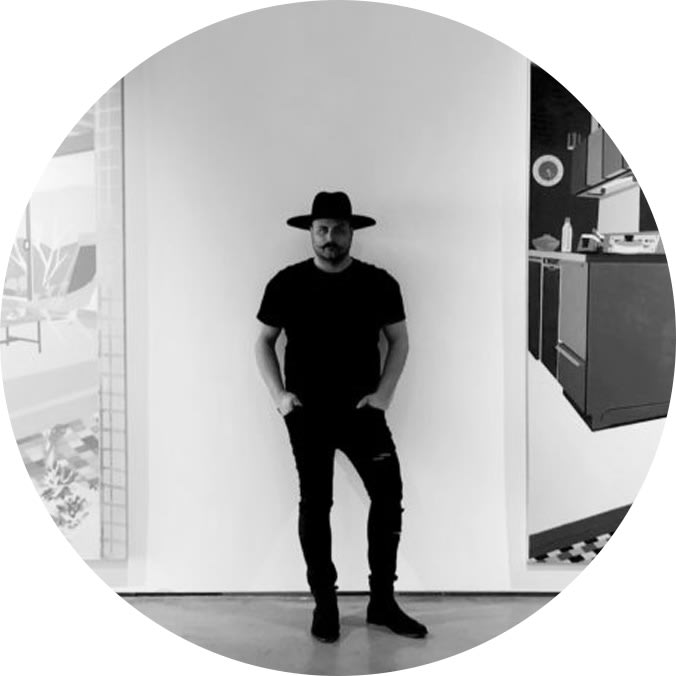Along a wall of this warehouse is a 20-foot long shelf stocked with an endless supply of aerosols meticulously coded by color and tone. In the corner, a spray plate sits stacked under a pile of hardened acrylic gloop--the culmination of tens of thousands of test sprays--at this moment drying into a sharp reflective chrome. There’s an atmosphere of orderliness in this studio: large paintings neatly slid into racks, the floor cleanly swept, not a single tool out of its box, not a single box unbuckled. It’s not what one imagines to be the typical artist’s habitat; there’s a forceful order to what happens here, the spirit of its host approaching something more of Henry Ford than Jean-Michel.
It was in this spirit, channeling great industrialists, the Greeks, the builders of civilization, that I saw Michael Callas peering out at the Los Angeles skyline as if it was his to build upon. And when you look at the 10-foot-tall painting of the artist sitting in a glasshouse perched cliff-side in the Hollywood Hills overlooking all of Southern California, you’ll see it too.
It’s the type of attitude you get from an artist who doesn’t regard the edge of the canvas as the limit of his pursuit. For Callas, all of Southern California and the world for that matter is fair game for the imagination to play out its visions.
The son of a commercial airline pilot, Callas developed a unique appreciation for mechanics and engineering at a young age, creating sophisticated furniture and interiors with advanced carpentry and other building techniques. Callas would eventually come to fine art by way of architecture utilizing his experience as a draughtsman and builder to form the basis for his painting practice. Characteristically ambiguous and ill-defined, it was painting that would provide Callas the opportunity to explore without practical limitations. After all, there’s no fear of the roof falling in and it could be fluorescent pink.
It comes as no surprise then when you see the methodical process by which Callas creates his paintings, that you witness a fusing of artist with logician. Each painting begins to an extant as a mathematical equation; a rigorous progression of scaling, drafting, mapping, and hand-cutting precise templates to accurately engineer an aerosol-ready image. It’s by way of this tightly controlled procedure that Callas can then unleash with full force the universe contained in the 10,000 cans of his meticulously coded colors.
The process was first established with a body of work known as the Case Study Paintings--a series in which we also see the emergence of Callas’ artistic identity. The Case Study Paintings, made between 2011 and 2014 showcase the moment painter and architect combine to detail the artist’s coming of age as both an individual and creator.
